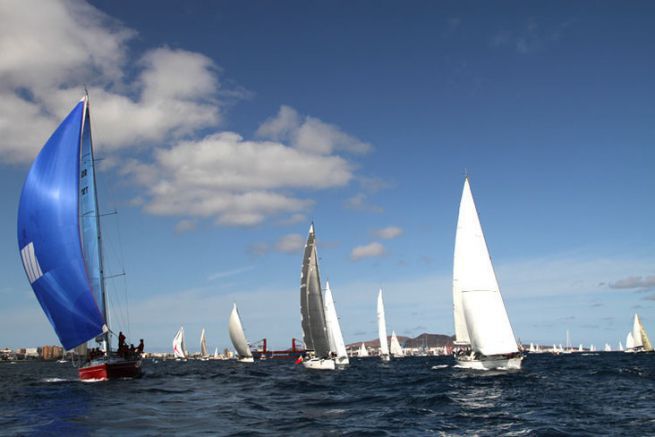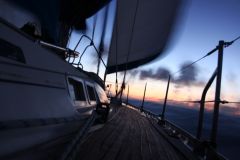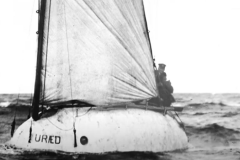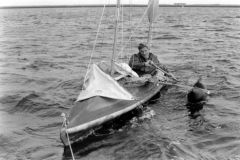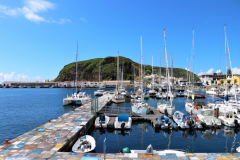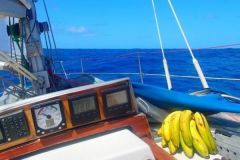A rally to cross the Atlantic
You ever heard of the RCAF? Probably not, judging by the low level of French participation. However, this incredible Atlantic Rally for Cruiser has been such a success for 31 years that the organisers, due to a lack of space in the Las Palmas marina, had to resort to organising two separate events. The first, the ARC +, had 71 participants - compared with 54 last year - who left Las Palmas on 6 November, heading for Mindelo, Cape Verde, for a new start towards Saint Lucia on 16 November. As for the ARC "historic canal", it brought together 216 boats of 31 different nationalities, divided into several categories.
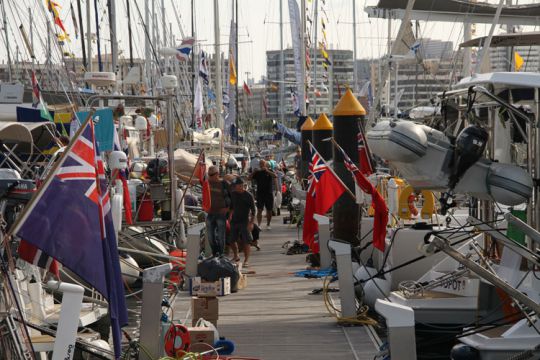
Every year, more than 1,000 yachts call at Gran Canaria. Most of them release in Las Palmas, a large city of almost 400,000 inhabitants. Among them, the participants of the ARC thus represent a quarter of the frequent travellers..
A race where the engine is allowed
The 35 pure racers are not allowed to use the engine. The others are allowed to - nearly 160 monohulls and 29 multihulls (20 last year...), including a trimaran, Juniper, rigged as a ketch. However, a clever formula makes it possible to classify the "cruisers", who are obliged to communicate - without cheating, please! - their daily engine time. The bulk of the troops are made up of English (67 boats), Germans (29 units) and Norwegians (16 sailing boats). The French, only represented by 7 sailboats, are therefore quite discreet with our Belgian friends (4 boats).
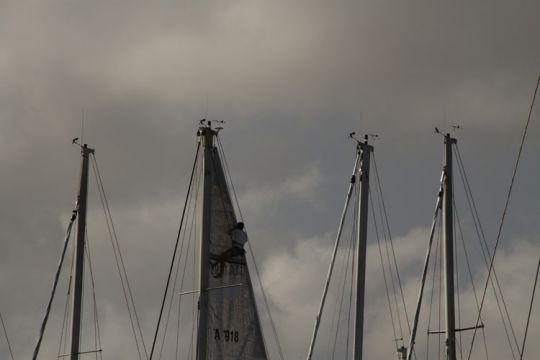
No concessions on safety
But we've had our rallies, too! Of course, we remember the Transat des Alizés and the Transat des Passionnés. And new rallies, like the one organised by the Grand Pavois team, are on the way. There are three reasons for this relative disaffection. First of all, the language barrier should not be overlooked: if you don't speak a word of English, it will be difficult for you to relate to the other crews. Secondly, the RCAF requires very comprehensive safety equipment. Each boat must be able to give its position every day, and before the start, the organisers review all the boats. Beacons, self-inflating jackets, lifelines: the safety station is screened. We know skippers who are less reticent than the French at the controls..
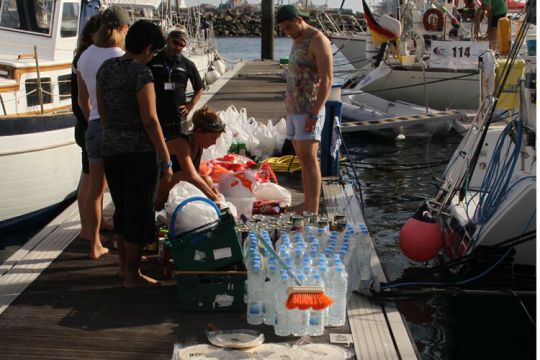
An atmosphere of madness
Add to that the incredible hustle and bustle of 1,265 sailors in a marina, and you can see why the RCAF doesn't necessarily appeal to blue-white-red flags. And that's too bad. The atmosphere on the pontoons of Las Palmas is actually extraordinary. Between gargantuan refuelling and last-minute tinkering, the show is worth living. What about the children? There are 23 of them, and they wander around in bunches, on foot or by bike and invite each other to sleep on their boats, even if they don't speak the same language! The organisers, between big open-air parties and fireworks, even offer them activities such as Optimist regattas.
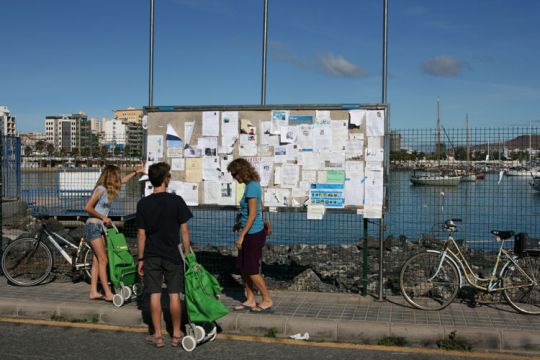
A well-functioning organization
Let's face it: if you're looking for solitude and tranquility, this rally is not for you. Just make do with the less convenient and free anchorage, located just north of the harbour. But for the others, eager to share the adventure that a transatlantic race represents, the services offered are particularly interesting: rallying event in Lagos (Portugal), the possibility of mooring at the Las Palmas marina - most boats arrive at the beginning of October -, return rally to Europe or round-the-world tour, the ARC can meet all the requirements. Ideal for those who wish to sail without taking their head.
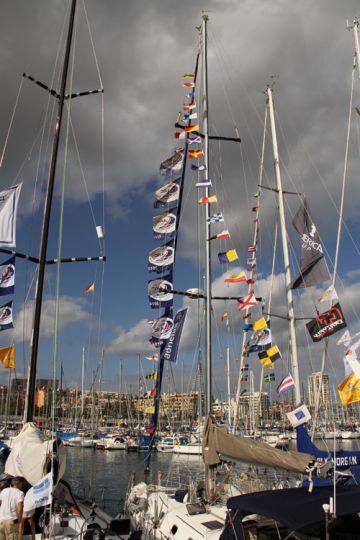
How much does it cost?
Let's talk big money. On average, it costs 2,000 euros to register with the CRA. These significant costs are partly amortized by the more advantageous port rates. But the main argument for rallies is safety. The organisers, in daily contact with all the skippers, are able to call in a nearby sailing boat in the event of a shipwreck, dismasting or rudder breakage.
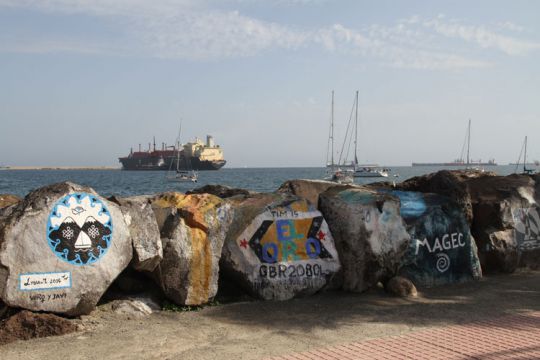
A start in ideal conditions
The impressive fleet, reduced by only four yachts trying to resolve technical problems, set off as planned on 20 November 2016. With the trade winds set at 10/12 knots, the boats quickly scattered over the horizon. The spectacle was provided by the race division: two competitors bit the start, taking a three-hour penalty. Record to be beaten in the event - set last year by the VO65 Team Brunel: 8 days, 7 hours, 39 minutes and 30 seconds.
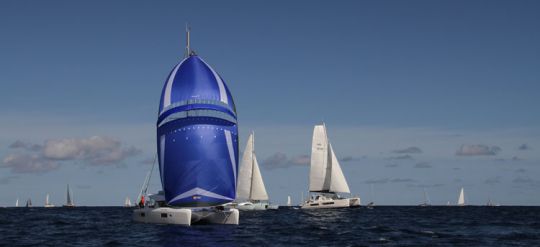
CRA by the numbers
- 18 to 21 days: that's the average time it will take to cover the 2,700 miles of the course.
- 216 sailboats are registered. 3 did not take the start due to technical problems, another returned to port to repair her plating damaged in a collision just before the start.
- 1,265 crew members, including 23 children. 18% are women, including 7 skippers.
- 9.50 m is the size of the two smallest sailboats, the Comfortina 32.
- The largest yacht is Iemanja, an aluminium superyacht designed by Ron Holland. It flies the Mexican flag.
- The average length of the boats is 15.51 m against 15.29 last year and 14.30 m in 2008
- 13 years old: this is the average age of the boats in the fleet - it was 11 years old last year.
- 26 units are Bénéteau. The Vendée shipyard is the most represented.
- 30 multihulls are registered, compared with 15 in 2008. The most represented are the Lagoons, with 16 units.
